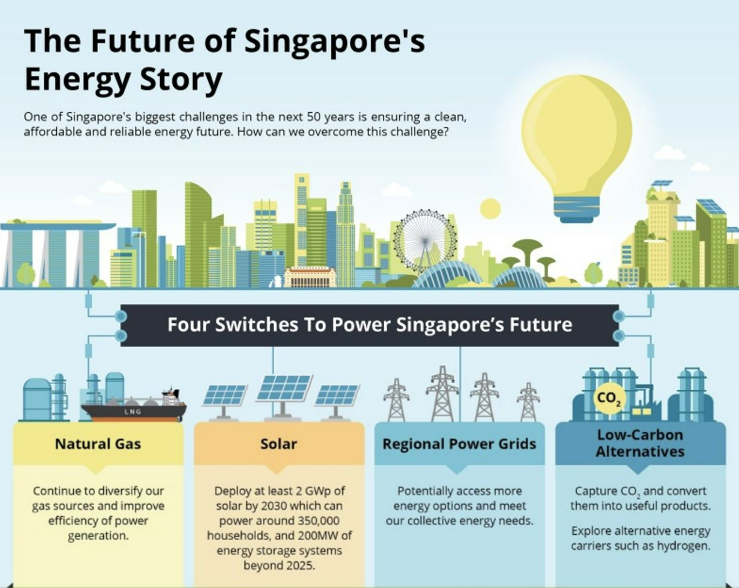The Future of Singapore's Energy Story

📷: Excerpt from Ministry of Trade and Industry
On 18 Sep 2018, 1:17am, many parts of Singapore were hit by a blackout that lasted for 38 minutes. Some 146,500 homes and businesses plunged into darkness while drivers navigated the roads without street lights.
But other warm stories unfolded during the power outage as well. The New Paper reported that a Bedok resident left torches in the bathroom for her elderly parents; drivers patiently signalled and gave way to one another. A father with three young school-going children said, “Since it was their first time experiencing (a blackout), I gave them a short social studies lesson on how people in olden days lived and how some people in other countries still live without electricity.”
While blackouts are uncommon in Singapore, how do we ensure that the lights never go out again?
Singapore is a small country with no natural resources. We import almost all our fuel and have limited energy options. As a low-lying island city-state, challenges brought about by climate change means that the way that Singapore uses and produces energy needs to change. In the 2000s, we switched from fuel oil to the cleaner and more efficient natural gas. Today, around 95% of our electricity is generated from natural gas. Natural gas is one of Singapore’s “four switches” vital to ensuring that Singapore has a reliable and efficient production and consumption of energy. Our Singapore LNG terminal enables us to access diverse and competitive sources of natural gas worldwide, meeting our increasing consumption of electricity, and enhancing our energy security and resilience.
Singapore is also exploring ways to tap on the other three switches, these being solar energy, regional power grids and emerging low-carbon solutions such as hydrogen and carbon capture. Despite land constraints, Singapore has a total of 7,698 solar panels as of the first half of 2023 and is in the process of testing floating solar deployments. The government plans to import up to 4 Gigawatt of low-carbon electricity by 2035 – this will supply about 30 percent of Singapore’s electricity. There are further steps to diversify import sources to ensure back-up supply is in place to mitigate disruptions. However, the transition to renewable energy may not mean cheaper electricity – infrastructure enhancements will add to overall costs which is an inevitable but necessary trade-off in the energy transition.
As consumers, we can all play our part by making energy conservation a way of life, for example, choosing energy efficient appliances, and adopting energy-saving habits such as air-drying clothes instead of using a dryer. (For more energy-saving tips, refer to NEA’s website https://www.nea.gov.sg/.../energy.../household-sector)
With all these efforts, it is not surprising that constant electricity supply is #TakenforGranted in Singapore. But we must also be prepared for contingencies. Exercise SG Ready is an inaugural island-wide exercise taking place between 15 February and 29 February. Different forms of disruptions, including power disruptions, will be simulated across the island to raise preparedness against crises and disruptions.
#WeAreTotalDefence #TogetherWeKeepSingaporeStrong #singapore

